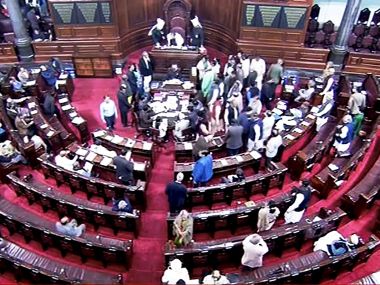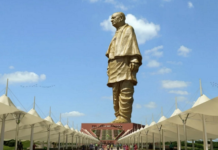Editor’s note: The recently concluded Budget Session of Parliament was, by all accounts, the least productive in at least a decade, marked by protest, adjournment, and very little constructive debate, let alone passage of bills. Firstpost will examine, by way of a multi-part series spread across a six-week span, the reasons why the Parliamentary process in particular, and the democratic apparatus in general, has failed India’s citizens. The clutch of essays, written by experts in the Constitution and constitutional law, will investigate the defects, introduced by design, that have enabled the degeneration of legislative functioning. Series has been curated by Bangalore-based lawyer and tutor of democracy and active citizenship, Malavika Prasad.
The Constitution of India envisages a bicameral legislative system at the federal level comprising the Lower and Upper Houses of Parliament. Political scientists consider the Upper House (Rajya Sabha) to be ‘co-equal with restrictions’ with the Lower House (Lok Sabha) in terms of design, power, and function.
This implies that through institutional design, the Rajya Sabha is at parity with the Lok Sabha, except in case of financial legislation. In other areas of legislation, disagreement between the two houses is to be resolved through a joint sitting. Despite this apparent parity, the period following the early 2000s has witnessed a gradual decline in its role as a second legislative chamber of Parliament.
While two houses of Parliament are not necessarily a better thing in terms of legislative outcomes (there have been instances of countries abolishing their upper houses, Portugal in 1926; Sweden in 1970 – both unitary in their nature of government), there are good reasons to retain the bicameral system of legislative organisation in countries which are federal in nature.
The principle of legislative federalism, which presupposes that the representatives from states are able to better frame laws which pertain to their interests, finds expression in the Indian Constitution through the division of legislative power between the central and state governments.
An additional way of operationalising legislative federalism is through an Upper House of Parliament where states’ representatives can articulate their distinct interests, and it is this function of the Rajya Sabha which has witnessed a gradual whittling away and requires reconsideration.
Quality, stability, and revision
The reasons for adoption of the bicameral system fall broadly into two categories. First, there are functional arguments to indicate that members of the upper legislative chamber could, as a result of the permanent nature of its tenure, develop legislative expertise over time. Writing in the Federalist Papers in 1788, Alexander Hamilton argued that an Upper House in the United States would serve as an anchor for legislation which was exposed to the changing compositions and interests represented in the Lower House, which was characterised by a “mutability… arising from a rapid succession of new members”.
In a similar vein, Montesquieu provided a justification for a second legislative chamber in European polities which would provide representation to a diverse range of interests, including representation of the wealthier aristocracy, as well as the members of a rapidly emerging commercial class in the wake of the Industrial Revolution.
Gradually, although the power granted to second chambers began to wane in countries with unitary systems of government like France and Britain, they retained influence. This was primarily because they were seen as having a moderating influence upon the agenda of the Lower House, with legislative expertise cultivated over time, as well as its relative independence from the popularly elected chamber.
Therefore, while the normative justifications advanced for the establishment and continuation of an Upper House have evolved over time, certain advantages which result from its design and composition continue to hold salience. In India, the nature of the Rajya Sabha’s procedure of selection, its eligibility criteria, as well as the presence of nominated members, indicate that its democratic legitimacy has indirect moorings, and its purpose is distinct from the Lok Sabha, which possesses direct democratic legitimacy. One of the ways in an Upper House of Parliament can exercise its influence on legislative agenda in cases where there is a clear Lower House majority is through private member bills.
In the period between 1952-2001, there have been fourteen private member bills introduced in the Rajya Sabha which became law, out of which five were in the first twelve years of the institution. Recent sessions of the Rajya Sabha, which have seen a large number of private member bills being introduced, have rarely seen any of them being passed, a matter discussed in greater detail here. This has greatly impacted the ability of non-majority parties in the Rajya Sabha to influence the legislative agenda.
Inter-cameral engagement on legislation which shuttles between the upper and lower houses has also been minimal, for reasons which have been explored in other pieces in this series, but it increasingly clear that legislative activity has been minimal in the Upper House.
One of the ways in which the Australian Senate has ensured a multiplicity of partisan interests is through its system of electing senators through proportional representation, where a party is able to secure representation by getting a certain minimum vote share. This is in contrast to the first-past-the-post system (FPTP) used in India, where the candidate with the maximum number of votes is declared the winner.
In FPTP electoral systems, votes garnered by losing parties do not translate into even minimal representation in a legislative body. Electoral systems with proportional voting have the ability to be more representative of the diversity of interest in a polity but are criticised for contributing to unstable, fractious and inefficient legislative bodies.
The Australian political arena has seen parties with a governing majority in the House of Representatives frequently being required to satisfy divergent interests in order to carry forward their legislative agenda. It is because of this that it is considered one of the strongest upper houses in the world, with considerable leverage over the legislative agenda and budget bills.
Such multi-partisan consensus building can be operationalised through joint sittings of the upper and lower houses, without a concomitant loss of the numeric supremacy which the Lok Sabha enjoys. It is another matter that the last time this occurred was in 2002 due to the logjam caused by the Prevention of Terrorism Bill.
A differentiated whole
The second category of argument advanced in favour of a second legislative chamber invoke federalism. The nature of Indian federalism necessitates the representation of state interests at the federal level. Federated countries are classified into two kinds by the political scientists Alfred Stepan, Juan Linz, and Yogendra Yadav.
Conceptually, India is best described as a ‘state-nation’, in contrast with a ‘nation-state’. In ‘state-nation’ polities, there is an ‘awareness of, or attachment to multiple cultural traditions’, which does not preclude identification with a common state identity. In ‘state-nations’, ethnocultural cleavages are salient, recognised, and democratically managed within a federal system which is usually asymmetric in nature. India, for example, retains a constitutional arrangement in which states are at an unequal bargaining relationship with the central government as a matter of design.
Institutionally, one of the ways in which this aspiration to democratic management finds expression is the creation of an Upper House of federal Parliament. In India, this is seen in the Rajya Sabha, which was intended to advance the representation of states’ interests at the federal level.
The composition of the upper houses and their manner of election is also relevant – in the US and Australia, where each state is permitted an equal number of senators. In this way, the ability of more populous states to exert a disproportionate influence on the activity of the House is curbed.
Of course, this is not the only way in which an Upper House may be designed. Such is the case with India, where Karnataka and Uttar Pradesh, which are of comparable spatial dimensions, are permitted 12 and 31 representatives in the Rajya Sabha due to their divergent populations. At a time when the inequitable nature of fiscal federalism in India is a matter of public discourse, this idiosyncrasy of Indian institutional design is important to consider.
In the course of the Constituent Assembly Debates, LM Singhvi, perhaps moved by American nomenclature, argued that the Council of States be called a ‘senate’, which would serve not as a revisionary chamber, but would “represent the federal ethos in India”, which would be a “grand inquest of the nation”, and represent the “diversities of languages… of cultures… perceptions and diversities of interests”.
In this way, it was seized with a representative nature which Shankar and Rodriguez describe as a ‘differentiated whole’. That the Rajya Sabha was intended as an aggregator of states’ interests is evident from its ability to pass laws on a state subject in certain cases, its ability to create all-India services, as well as its emergency powers when the Lok Sabha stands dissolved.
This, however, has become gradually eroded over time, for a number of reasons, one of which was a judicial pronouncement removing the domiciliary requirement in order to be a member of the Rajya Sabha in 2003, a move which has since been criticised. Consequently, a Rajya Sabha member is no longer required to have any ties with the state of which she is a member.
It is not difficult to see that this does disservice to its intended purpose. It may be prudent to reconsider whether this move best serves the intended institutional interests of the Indian Upper House in representing the varied and distinct interests which states may have, at a federal forum.
Conclusion
Upper houses of parliament were historically designed to ensure a measure of temperance to the legislative agenda of popularly elected lower houses of parliament, as well as to ensure the representation of a more diverse set of interests, whether it be of a certain social class in unitary states like Britain, or of states in the US.
India’s Upper House has, over time, whittled away its ability to exercise its legislative influence over policy issues, as well as its ability to represent states’ interests at a federal level. In doing so, it has become an institution in search of a mission. If we are to take India’s commitment to legislative federalism seriously, its role and function in Indian democracy require a rethink.

 India
India




















